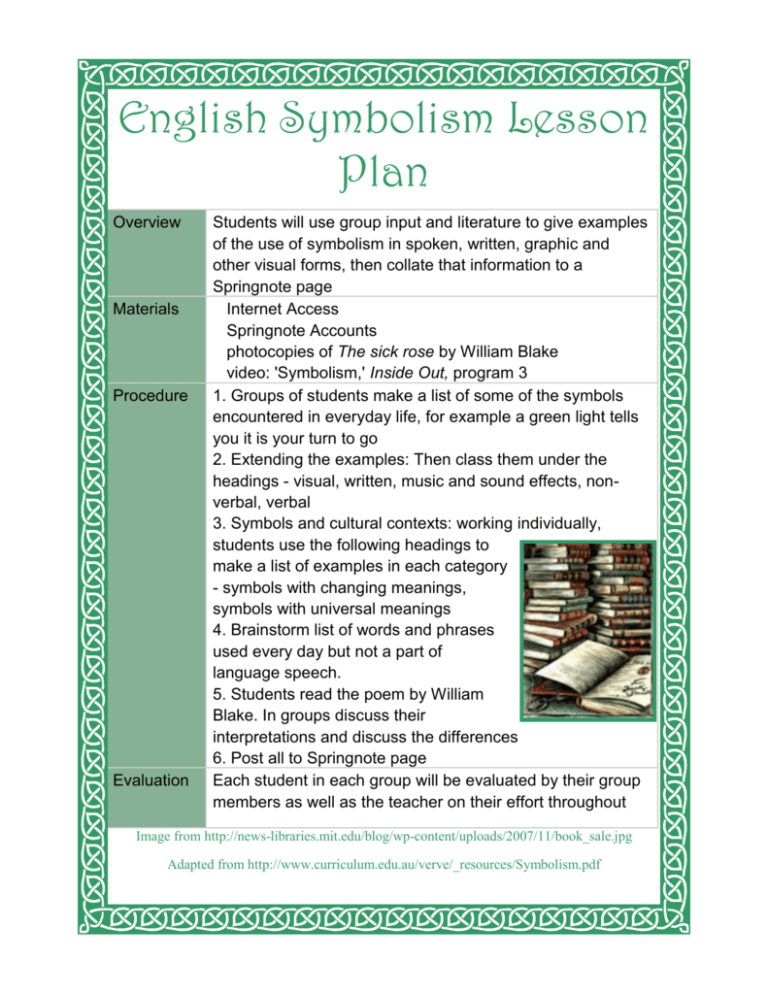English Symbolism Lesson Plan.doc
advertisement

English Symbolism Lesson Plan Overview Materials Procedure Evaluation Students will use group input and literature to give examples of the use of symbolism in spoken, written, graphic and other visual forms, then collate that information to a Springnote page Internet Access Springnote Accounts photocopies of The sick rose by William Blake video: 'Symbolism,' Inside Out, program 3 1. Groups of students make a list of some of the symbols encountered in everyday life, for example a green light tells you it is your turn to go 2. Extending the examples: Then class them under the headings - visual, written, music and sound effects, nonverbal, verbal 3. Symbols and cultural contexts: working individually, students use the following headings to make a list of examples in each category - symbols with changing meanings, symbols with universal meanings 4. Brainstorm list of words and phrases used every day but not a part of language speech. 5. Students read the poem by William Blake. In groups discuss their interpretations and discuss the differences 6. Post all to Springnote page Each student in each group will be evaluated by their group members as well as the teacher on their effort throughout Image from http://news-libraries.mit.edu/blog/wp-content/uploads/2007/11/book_sale.jpg Adapted from http://www.curriculum.edu.au/verve/_resources/Symbolism.pdf











